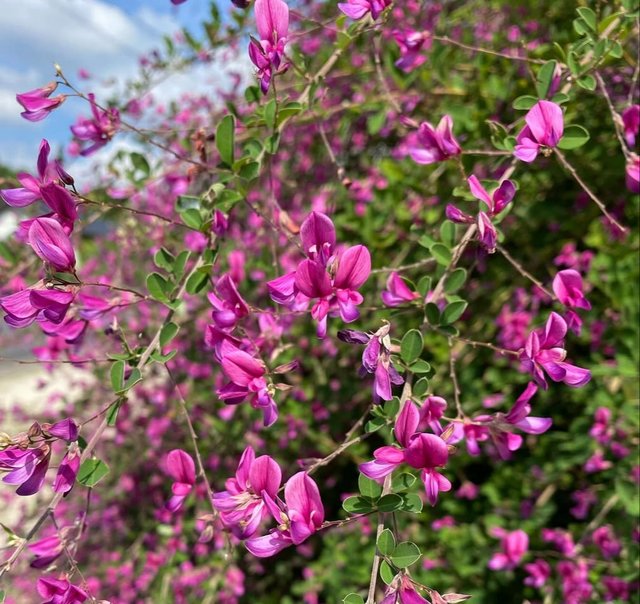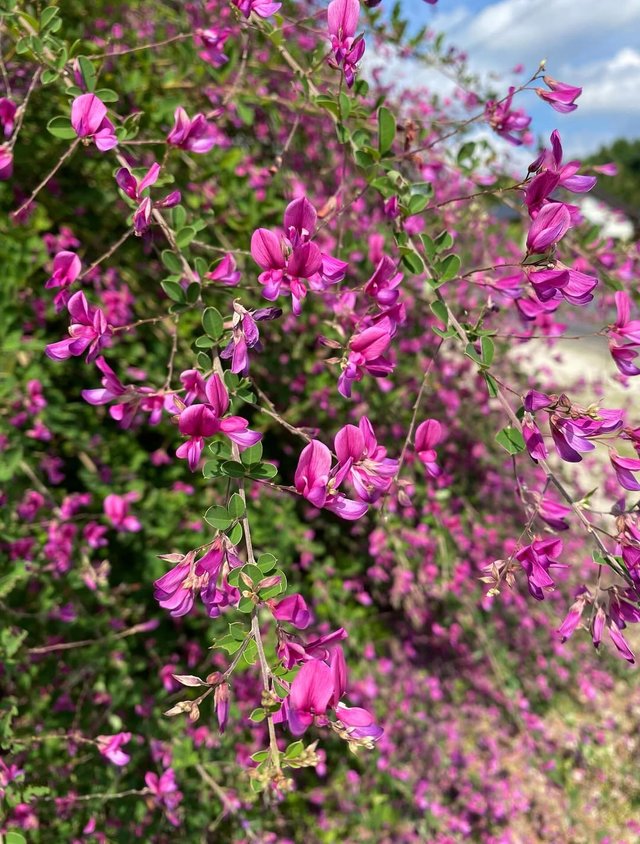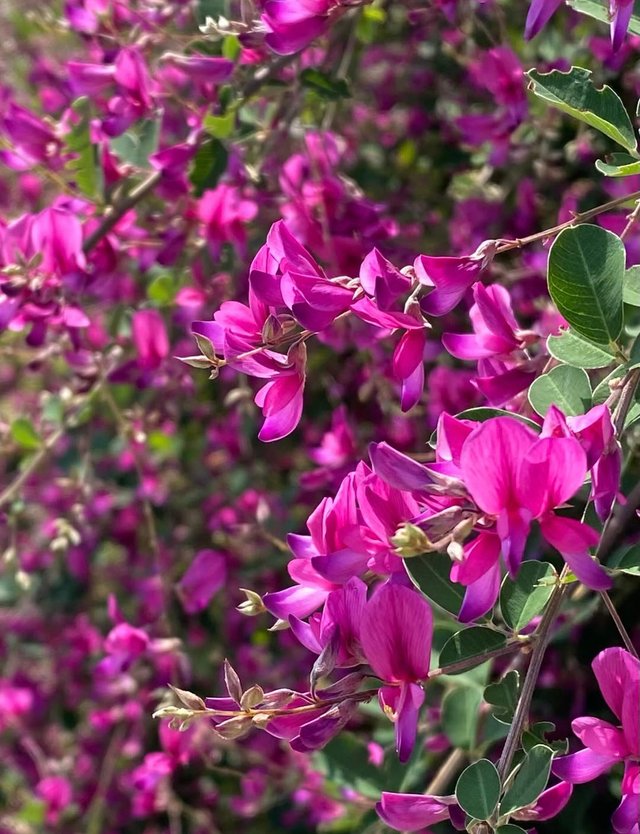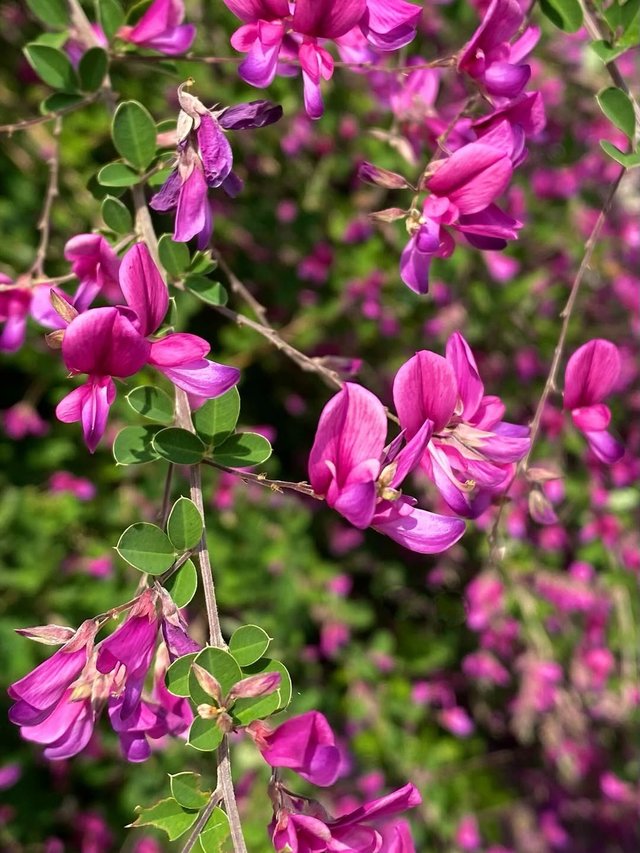Lespedeza bicolor Flower
Lespedeza bicolor commonly known as bush clover or shrubby lespedeza is a deciduous flowering shrub it is native to East Asia particularly China Japan and Korea but has been introduced to other regions including parts of North America where it is often grown for erosion control and as an ornamental plant the shrub typically grows between 1 to 3 meters tall with arching slender branches that give it a graceful and somewhat cascading appearance the leaves are trifoliate consisting of three small oblong leaflets with a soft green coloration that complements the abundant flowers the blooming season usually occurs from late summer to early autumn when the shrub becomes covered in clusters of small pea-like flower.
The flowers are typically pink purple or rose-colored with a delicate form that attracts pollinators such as bees butterflies and other beneficial insects after flowering the plant produces small seed pods which provide food for birds and small wildlife contributing to its ecological value Lespedeza bicolor is highly adaptable to a variety of soil types though it prefers well-drained sandy or loamy soils it is tolerant of drought poor soil fertility and even acidic conditions making it an excellent plant for stabilizing slopes preventing erosion and restoring degraded lands because it is a legume the plant has the ability to fix nitrogen in.
The soil improving soil fertility for surrounding vegetation in landscapes Lespedeza bicolor is appreciated for its ornamental appeal with its arching form colorful blooms and long blooming season it is often planted in gardens parks and naturalized settings either as a standalone shrub or in groups to create a mass of color in late summer the shrub is also valuable in conservation plantings roadside beautification and as wildlife habitat providing nectar seeds and shelter despite its many benefits in some non-native regions particularly in parts of the United States Lespedeza bicolor has shown invasive tendencies spreading aggressively in natural habitats.




